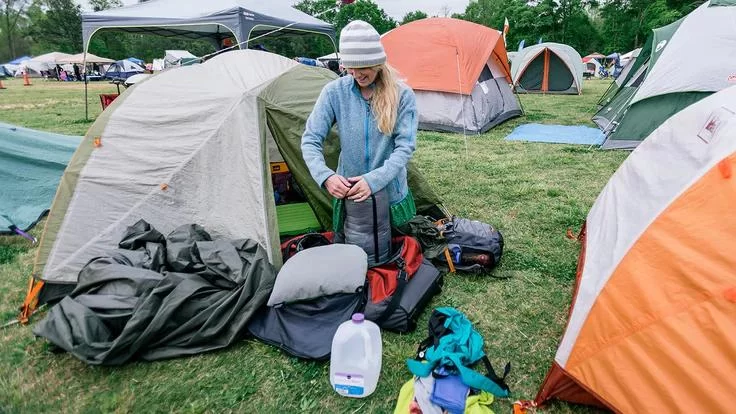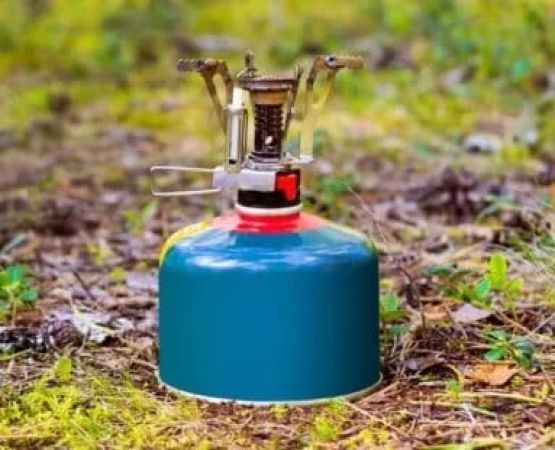How to Choose Camping Gear for Extreme Weather
When I first started camping, I never imagined how unpredictable the weather could be in the wild. I had been on a few day trips, enjoying mild weather and sunny skies. But my first real test came when I decided to take on a multi-day hike through the mountains. I learned quickly that even the most beautiful landscapes can turn into dangerous environments if you're not prepared for extreme weather. Now, after years of outdoor adventures, I've gathered some key insights on how to choose the right camping gear for harsh conditions. This is my guide to surviving and thriving in extreme weather, whether you're facing freezing temperatures, heavy rain, or scorching sun.
1. Understanding Extreme Weather
Before diving into what gear you'll need, it's crucial to understand what “extreme weather” really means. While it can vary depending on where you're camping, extreme weather typically refers to conditions that are dangerous or challenging for most people. This includes:
- Freezing temperatures
- Heavy rain or snow
- High winds
- Intense sun exposure
- Severe humidity
For example, on a recent winter camping trip to the Sierra Nevada mountains, I encountered temperatures well below freezing. If I hadn’t had the right gear, I would have been in serious trouble. That experience taught me the importance of being prepared for whatever Mother Nature throws at you.
2. Layering is Key
One of the first things I learned about extreme weather is the importance of layering your clothing. You never know how the weather will change over the course of a day, and layering gives you the flexibility to adjust to temperature fluctuations. Here's what I recommend:
- Base Layer: This layer is closest to your skin and should be moisture-wicking to keep sweat off your body. Merino wool is a great material because it’s warm, breathable, and naturally odor-resistant.
- Mid Layer: This is for insulation. Fleece jackets or down vests work well here to trap your body heat without making you feel too bulky.
- Outer Layer: Your outer layer needs to protect you from wind, rain, or snow. Waterproof and windproof jackets are essential. Look for jackets with ventilation to prevent overheating.
By layering, you can stay warm without sweating, which is crucial for avoiding hypothermia in cold conditions. On that Sierra Nevada trip, I layered up with a merino wool base layer, a down jacket, and a waterproof outer shell. It was freezing outside, but I stayed comfortable because I could adjust my layers throughout the day.
3. Choosing the Right Shelter
Your tent is your home in the wild, and in extreme weather, it can make the difference between survival and disaster. When I camped in the snowy mountains, I learned the hard way that not all tents are made equal when it comes to harsh conditions. Here’s what I look for when selecting a shelter:
- Four-Season Tents: These are built to withstand snow, heavy wind, and low temperatures. They have a sturdier frame and more robust materials than your standard three-season tents.
- Ventilation: Even in cold weather, your tent needs proper ventilation to prevent condensation buildup, which can make you feel damp and cold.
- Weather Resistance: Look for tents with waterproof coatings and sealed seams to ensure that rain or snow doesn’t get in.
When I camped in a blizzard, my four-season tent stood strong against the wind and snow. I had plenty of room to store my gear and stay dry, while my friends in standard tents weren’t as lucky. Your tent is your first line of defense against the elements, so choose wisely.
4. Insulating Sleeping Bags and Pads
In extreme weather, your sleeping bag and pad are critical for staying warm. I’ll never forget the time I camped in the Rockies during the early fall. The temperatures dipped to freezing at night, and without the right gear, I would have been in serious trouble.
- Sleeping Bags: Make sure you choose a sleeping bag rated for temperatures colder than what you're expecting. Down sleeping bags are lightweight and compressible, making them a great option for cold weather. Synthetic bags, though heavier, are better at retaining warmth when wet.
- Sleeping Pads: A good sleeping pad insulates you from the cold ground, which is essential in freezing conditions. I always use a foam pad with an air mattress on top for extra insulation.
On my coldest night, I was warm and cozy in my -20°F sleeping bag, thanks to its insulated design and my sleeping pad. I’ve never taken this gear for granted again. It’s vital to make sure your sleeping bag is rated for the conditions you'll be facing.
5. Essential Cooking Gear
When camping in extreme weather, cooking can be a challenge. Cold temperatures can freeze fuel, and high winds can make cooking difficult. Here are a few tips for cooking in harsh conditions:
- Windproof Stoves: A windproof stove will allow you to cook even on the windiest days. I’ve used stoves with built-in windshields, which help keep the flame intact even in gusty conditions.
- Proper Fuel: In colder temperatures, some fuels (like butane) freeze. I prefer using liquid fuel stoves, which work better in sub-zero temperatures.
- Easy-to-Make Meals: On extreme trips, I stick to freeze-dried meals that are lightweight and quick to prepare.
On one trip to the Cascades, the wind was so strong it knocked my stove over multiple times. But my windproof stove performed beautifully, and I was able to make a hot meal in no time. In extreme conditions, a little preparation can make all the difference.
6. Hydration and Water Purification
Staying hydrated is essential, but in extreme weather, getting clean water can be tricky. On my Alaskan adventure, I had to deal with freezing water sources, which made it hard to access fresh water. Here's how I make sure I stay hydrated:
- Water Filters: A good water filter will make sure you can drink from streams or lakes safely. In freezing conditions, I always carry a backup filter in case one freezes or fails.
- Insulated Water Bottles: In cold weather, your water can freeze. Insulated bottles keep your water from freezing and ensure you have access to liquid even in extreme temperatures.
During my Alaskan trip, my insulated bottles were a lifesaver, and my water filter allowed me to safely drink from the nearby streams, despite the freezing temperatures.
7. Final Thoughts on Survival Gear
Surviving extreme weather conditions is all about preparation. By selecting the right gear, layering properly, and being mindful of your environment, you can enjoy outdoor adventures no matter how harsh the weather gets. Always test your gear before heading into the wild and pack extra supplies in case of emergencies. With the right camping gear for extreme weather, you can turn even the toughest conditions into an unforgettable experience.







